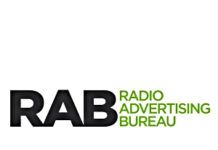
In our continued series on shorter stopsets, we step away from local broadcasters to talk with someone who’s had success with fewer ads on a national level. Bob Quick is the Director of Radio Partnerships and Traffic at Motor Racing Network, the syndicator of NASCAR.
Radio Ink: Our series started on a smaller scale – individual stations or small groups that broke away from these big ten-plus-unit stopsets. Motor Racing Network is on a whole different level. Does the game plan still match up on a larger scale?
Bob Quick: It always amazed me coming from the programming side. Supply and demand is a basic tenet of economics. I can remember when I was a local seller, our main competition as far as rates were was cable TV. Cable could undercut us every day of the week because they had basically unlimited inventory. So when you have unlimited inventory, all it does is make the rate go down so it makes sense to limit it, right? That will shove rates back up. But unfortunately, that’s not what’s happened in our fair industry.
Radio Ink: So how do you manage your own supply at Motor Racing Network?
Bob Quick: One of the ways radio stations use our programming is to block out a few hours of time. They package it up with the rest of the week. People do it with baseball, too, because baseball takes up so many hours of programming during the week that you’re able to limit your other inventory, so it puts pressure on and keeps rates up.
Radio Ink: And when did this start for you?
Bob Quick: The network’s been around for 54 years and it’s always been one-minute breaks. Because of the nature of racing, there’re no natural breaks like in baseball or football. So to take longer than a minute away from the action, you can miss a lot. So it’s always been one-minute breaks from inception. Now, if you look at our clock, there are twelve minutes of commercials total in the hour – six local and six network taken separately.
One of the cool things about NASCAR is that our fans embrace the commercialization of the product, so we try to come up with solutions like a local broadcaster. We sell direct a lot of the time. So there’s a ton of product placement, but it’s really in-content sponsorship – anybody listening to a sports broadcast understands that. Whether you’re selling sponsorship with a baseball lineup or whatever, we do that same thing. We have sponsors for restarts, cautions, and race lineups, but that’s all in-content. It’s can’t miss because of its location, which makes it more valuable.
Radio Ink: That definitely makes sense. I’ve seen NASCAR on TV and they can do picture-in-picture ads. Obviously, radio doesn’t have that luxury. Do you think some would argue your shorter stopsets are born out of necessity?
Bob Quick: You’re right, but you also have to consider that we could have opened the inventory up but didn’t. It would not only have been bad for the quality of our broadcasts but it would have eventually affected the rate. And not in a positive way.
Radio Ink: We’ve talked a lot about syndicated sports – what about syndicated music shows? Do you think there could be room for a jump to short stopsets?
Bob Quick: I think you could see some over time, if a station cuts back its inventory it’ll see a raise in rates – look at the other subjects in this series. Inventory control is one of the most important things to do at a radio station to protect your money.
Radio Ink: One thing we haven’t talked about in the series yet is barter. The odds are good that most of our readers have worked at or experienced a station inventory clogged by barter from syndication, a product, or a service. Do you feel we need to move away from that to clear inventory?
Bob Quick: Well, everything costs money. We have anywhere from six to ten announcers plus a producer and engineer on the road every week. I can’t speak for another syndicator, and what their hard costs are, but when we as an industry got away from wanting to pay for things, you still have to pay for those things. It’s either cash or barter. I don’t see a network or syndicator finding a way around that.
Radio Ink: But do you run barter outside of the races?
Bob Quick: No, our only required spots are the 6 per hour inside the races. We try to make it as palatable as possible for our stations.
Radio Ink: So what about the stations that are striking deals with syndicators for spots outside the programming hours?
Bob Quick: Coming from the programming side, and I worked in multiple markets, one of the first things I did every time I went into a new station was to look at what kind of inventory we were dedicating to agreements for products and services. You had to take a hard look at whether the program or service was worth what they were asking. Sometimes it was, and sometimes it wasn’t. It depends on the individual and the return on investment.
I’ve got 30+ years in this business at all different levels. I lived through the Dereg of ’96. I witnessed it all and there’s still something there of value to the consumer and advertiser, we just need to find what’s right in our individual markets that make sense not only for those constituencies but also for our business model. I truly believe “Less is More” when it comes to inventory.
There are a lot of independent broadcasters out there who I’m sure are reading these articles wondering, “What can I do to keep my position and raise my revenue?” I really feel like this is one of the best ways for those that are willing to take that step.
Read more on our shorter stopset series with Jeff Ziesmann, John Ostlund, and Bill Lynch.







